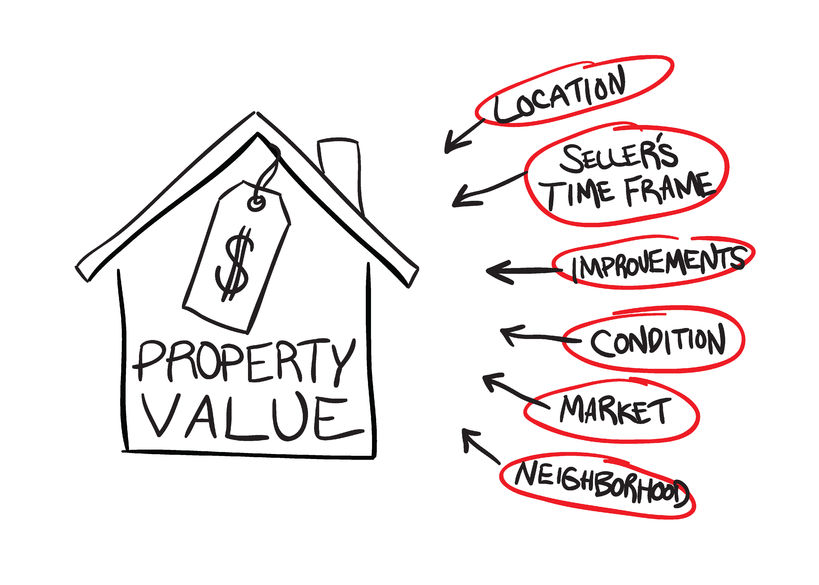
As an important component of the home buying or selling process, a Realtor usually creates a comprehensive market analysis or CMA to provide their client(s). Conversely, when a borrower applies for a home loan, the lender will engage an AMC (Appraisal Management Company) so they in turn can assign the appraisal request to one of their approved licensed real estate appraisers. The real estate appraiser then creates an appraisal report to provide the lender as the client.
While neither report is an exact science, both the CMA and an appraisal report help to estimate a property’s current market worth. Having said that, the differences between the two could not be farther apart and the level of analysis and detail does not even begin to compare.
So now you ask – Are CMAs and Appraisal Reports really the same? If not, what makes them different?
A CMA is simply a marketing tool used mostly by Realtors to either identify an offer price for a home buyer or provide an owner a suggested listing price. Most CMAs created today are done in less than an hour and I’m being generous. Considering all the analysis and research that’s needed, an appraisal report often times can easily take 5-6 hours and more. If an Underwriter rejects a comparable sale within the report, the UW can then request another comp requiring a second field inspection visit by the appraiser. All of this adds time to the appraisal report writing an reconciliation and not unusual for it to take an entire day to complete.
Typically, the CMA includes the home you want to purchase (the ‘subject property’) and similar or like-properties located in the area. Keep in mind that a CMA only provides a very basic level of detail of the ‘subject’ to recently closed ‘comparable sales’ and give the Buyer or Seller some clue on how the ‘subject’ compares to the other homes listed in the CMA. Armed with this information and if done correctly, a Buyer or Seller can form an informed decision not only of the of the value-range, but what could be expected as an initial offer. If the Realtor did his job well, there shouldn’t be any surprises.
Most anyone can prepare a CMA by doing some research online. In fact, most buyers and sellers already do so without even knowing it. They study a neighborhood, visit numerous open-houses, they take notes, photos and later comparing them between recently sold homes and those currently listed. The most obvious categories compared are; location, price, living area, lot size, bedrooms, baths, appeal, condition, features, etc. By doing so, Buyers and Sellers alike are actually building their own version of a CMA report.
The area of a CMA can be easily expanded by simply increasing the search radius or even including an adjacent zip code, however, one has to be very careful since doing so may include properties located in higher priced areas. Knowing the neighborhood boundaries and dividing lines is extremely important and something a Buyer or Seller would never want to overlook.

An Appraisal Report… A real estate appraisal is an OPINION OF VALUE, provided by a professional with certain prerequisite training and experience and licensed by the state in which they operate. The value opinion is based on an investigation of the subject property, the neighborhood, as well as market conditions and appropriate comparable sales. The analysis of the foregoing data is then condensed and reconciled into that opinion of value.
As previously mentioned (and I will expand a bit), a Borrower looking to finance a 1-4 Unit Owner-Occupied property, whether buying or refinancing will need to order an appraisal report. In recent years, the newly adopted appraisal ordering protocol requires the lender providing the financing to place an appraisal order not directly from the licensed real estate appraiser, but rather from an “AMC”, an Appraisal Management Company. Unbeknown to most, even though the Borrower actually pays for the cost of the appraisal report, the Lender is the ‘client’ and listed as such, the entity who receives the appraisal report. A Borrower has the right to a copy of the appraisal report, but they have to request it.
This can be a complicated topic, but for the purpose of this post, it’s suffice to say that Appraisal Management Companies were created by changes in federal laws and standards that have newly defined the separation of the appraisal ordering system from a loan production staff through an intermediary, a neutral 3rd party, an ‘AMC’. These recent changes have created an even higher expectation of the appraisal report itself. The bottom line, after the devastating real estate implosion that started in 2007, the real estate industry felt it needed complete transparency of the appraisal ordering system between mortgage brokers, lenders and the real estate appraisers themselves.
Some of the laws and new standards are listed below:
- The Home Valuation Code of Conduct (HVCC) superseded in October 2010
- HUD-FHA Mortgagee Letter 2009-28
- The Dodd-Frank Act
- Fannie Mae Announcement SEL-2010-14
- Freddie Mac Bulletin 2010-23 New Guide Exhibit 35
- Federal Reserve Board interim Final Rule
- 2010 Inter-agency Appraisal and Evaluation Guidelines
An appra isal report uses appraisal specific guidelines that were established by the Federal Housing Finance Agency (FHFA) which regulates federal housing loan guarantors such as FHA and VA, as well as secondary market housing loan purchasers Fannie Mae and Freddie Mac.
isal report uses appraisal specific guidelines that were established by the Federal Housing Finance Agency (FHFA) which regulates federal housing loan guarantors such as FHA and VA, as well as secondary market housing loan purchasers Fannie Mae and Freddie Mac.
In closing, the purpose of a CMA is not to determine market value, an appraisal report does that. A CMA assists a Buyer or Seller to decide a value-range by which to formulate an offer or an asking price to make a property available for sale in the open market. A CMA cannot be used by a lender to determine a lending and funding decision, a real estate appraisal report completed by a state licensed appraiser can only do that.
